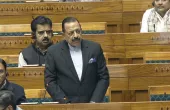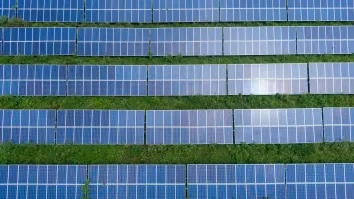
Does the feed-in tariff still fit for Asian solar PV?
Tender and auction schemes may be winning.
When policymakers look into the future of solar photovoltaic (PV) development in Asia, the role of feed-in tariffs (FITs) is slowly but surely becoming fuzzy as tender and auction schemes provide an attractive alternative. Benjamin Attia, global solar markets analyst at GTM Research says there were 49 national markets where tendering or auction schemes are in place in May 2017, up from 32 in the second half of 2016. During the first five months of the year, 29 reverse auction or tender procurement programs were launched or planned.
Citing the recent spate of record-breaking bid auctions such as a Chinese-Japanese consortium’s bid to build a solar panel farm in Abu Dhabi for $0.0242 per KW/h and the fact that most Asian countries now have a tendering or auction scheme in place, Attia reckons these trends “demonstrate that, globally, unsubsidized grid parity has arrived or is fast approaching in many of these markets, which calls the long-term sustainability of FIT into question.”
Designing auctions
Whilst solar PV and other renewable energy auctions have encountered implementation hurdles in the past, they have recently become a popular policy tool mainly because of their potential to achieve deployment in a cost-efficient and regulated manner, says the International Renewable Energy Agency (IRENA) in a report.
“Auction schemes have benefited from the rapidly decreasing costs of renewable energy technologies, the increased number of project developers, their international exposure and know-how, and the considerable policy-design experience acquired over the last decade. When well designed, the price competition inherent to the auction scheme increases cost efficiency and allows price discovery of renewable energy-based electricity, avoiding potential windfall profits and underpayments," says IRENA.
The agency says that policymakers must take great care when designing auctions, making sure that there are stringent bidding requirements and strong compliance rules in the form of guarantees and penalties to reduce the risk of underbidding, project delays and project failure.
IRENA's study reveals, for example, that sealed-bid auctions are easier to implement and fosters greater competition, while descending clock auctions can be more difficult to implement but allows for a fast price discovery and greater transparency. Ceiling prices should also be kept from bidders.
Project bankability
As tender and auction schemes become more popular in Asia, project bankability is also bound to become more important. Rohan Singh, managing partner Asia at Finergreen says several of the top criteria for lenders when evaluating a solar PV project's bankability include having a stable and predictable cash flow, satisfactory coverage ratios, guarantees, and mitigation strategies for risks. This also includes technology and strong knowhow, past experience, regulatory considerations, financing mechanisms, and regional specificities.
Given these criteria, Singh recommends several strategies to create more bankable solar PV projects in Asia. Before even a single hole is dug or a component produced, it is crucial to conduct extensive environmental and social impact studies, which will then help guide risk mitigation measures. To avoid technical difficulties and cost overruns, which drastically lower the bankability of a solar PV project, there is a need to conduct peer-reviewed feasibility studies and rigorous selection of engineering, procurement and construction partners.
Strong renewable ambitions
Analysts reckon that designing auctions and raising project bankability will enable Asia to pursue its strong renewable ambitions. Attia says that three of the four top markets for solar PV this year will come from Asia, namely China, India and Japan with the US rounding out the list. And although there will be a forecasted decline in East Asia next year, roughly 60% of global demand will still come from Asian markets.
Singh, for his part, says the region is looking to install 900 GW by 2030 in order to give electricity access to 500 million people -- a target that will require roughly US$147b per year in investments.
Given the large amount of investments required to fuel Asia's renewable goals, he reckons the region faces two key challenges: Access to financing solutions remains difficult to small or mid-size projects, and a lack of local experience in renewable deals structuring.
Singh says that a broad range of diverse sources of funding can help bridge the gap with the capital requirements in Asia.
In the case of Pakistan and Malaysia, Islamic financing has risen as an attractive option to bankroll their renewable and solar PV projects. Pakistan's US$955m hydropower plant has been financed through the issuance of Islamic bonds, an infrastructure deal that was notably one of the largest in the country's history. The Malaysian government likewise encourages Sharia'-complaint financing.



















 Advertise
Advertise







